Introduction
What Color Are Pigeons: Pigeons, those ubiquitous birds found in urban landscapes and rural settings alike, are a fascinating subject of inquiry when it comes to their coloration. While pigeons may seem unremarkable at first glance, their plumage displays a surprisingly diverse range of colors and patterns. These avian creatures, often associated with gray or bluish hues, defy such simple categorization. We will delve into the captivating world of pigeon colors, uncovering the remarkable spectrum of shades and patterns that adorn these birds and shedding light on the factors that contribute to their distinctive appearances.
From iridescent greens to rich purples and striking patterns, pigeons prove that there is more to their coloration than meets the eye. Pigeons, members of the Columba genus, encompass a wide array of color variations that challenge the conventional perception of them as uniformly drab birds. Often referred to as rats with wings in some urban settings due to their prevalence, pigeons are actually an intriguing canvas of colors. Their feathers can exhibit an astonishing spectrum of shades, from the classic gray and bluish tones to striking variations that include iridescent greens, vibrant purples, rich browns, and even eye-catching patterns.
These variations in pigeon plumage are a testament to the intricate interplay of genetics, diet, and environmental factors. The diverse colorations among pigeons are not just a matter of aesthetics; they serve as a valuable lens through which we can explore the fascinating adaptations and evolutionary strategies that have allowed these birds to thrive in diverse habitats around the world. The factors that influence their appearances and unveil the captivating world of hues and patterns that make pigeons a subject worthy of our curiosity and admiration.
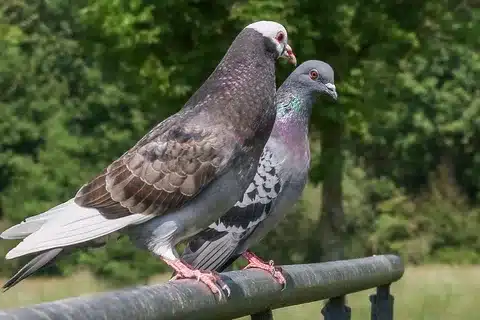
What color are pigeons?
Red: These birds are a rusty red color all over.
Spread: Pigeons that are black all over.
White: These pigeons are plain white, with no other color.
Checkered: These birds have a checkerboard pattern on their wings.
Pigeons, often regarded as ubiquitous urban birds, exhibit a surprising array of colors in their plumage. While the image of a gray or bluish pigeon may come to mind, the reality is far more intricate. Pigeon colors range from the familiar gray and blue to a captivating spectrum of hues, including iridescent greens, rich purples, soft browns, and even striking patterns.
The primary factor influencing pigeon coloration is their genetics. Various genetic mutations can give rise to distinct color variations, leading to a vast palette of shades within the pigeon population. Diet and environmental factors also play a role. A nutritious diet rich in pigments can enhance the vibrancy of a pigeon’s feathers.
Pigeons are known for their iridescent feathers, which can shimmer in different colors depending on the angle of light. This optical phenomenon adds an extra layer of complexity to their coloration.
Pigeons’ diverse colorations serve not only aesthetic purposes but also functional ones. In some cases, they act as a form of camouflage, helping pigeons blend into their surroundings. In other instances, they may play a role in mate selection, with certain colors being preferred by potential partners.
How many colors are pigeons?
They are basically white, gray, brown, black and varying shades and mixture of these colors. The gray ones with shiny peacock blue necks are most common while second position goes to white and brown mixed, then white and black, white and gray mixture and pure white with wine-red coloured eyes.
Pigeons, often seen as common urban birds, exhibit a surprisingly wide spectrum of colors in their plumage. While the image of a standard gray or bluish pigeon is prevalent, the reality is far more diverse. Pigeon colors encompass an impressive range, including various shades of gray, blue, brown, and white, but they also extend into more vibrant and unexpected territories.
Some pigeon species, like the Rock Pigeon, which is the most common urban pigeon, come in an array of colors, including pure white, slate gray, and bluish hues. Some individuals may display subtle variations within these colors, leading to a myriad of shades.
Interestingly, certain pigeon breeds have been selectively bred over generations for specific color patterns and variations, leading to pigeons with striking and unique color combinations. These specialized breeds may exhibit colors such as deep purples, iridescent greens, striking reds, and intricate patterns that further expand the spectrum.
Are pigeons blue or gray?
Dark bluish-gray head, neck and chest with glossy greenish and reddish-purple iridescence around the neck and wing feathers. Orange or red iris with pale inner ring adult or brown or grayish brown juveniles Black bill with off-white cere. Red feet and legs.
Pigeons are commonly perceived as being either blue or gray, but the reality is more nuanced. The pigeon’s plumage can vary widely, and it can exhibit a spectrum of colors ranging from soft grays to bluish tones. The term “blue” often describes the common Rock Pigeon, which is known for its predominantly bluish-gray coloration. These pigeons typically have a bluish-gray body with slightly darker wingtips and tail feathers. This bluish hue can appear more pronounced in certain lighting conditions, adding to the perception of blueness.
The perception of pigeon color can be influenced by factors such as lighting, diet, and individual genetic variations. Pigeons can also exhibit other colors, including white, brown, and various shades of gray, depending on their specific species and genetic makeup. Some pigeons have patterns, such as spots or stripes, which further contribute to their diversity of appearances.
So, while the terms blue and gray are often used to describe pigeons, pigeon coloration is not limited to these two options. Pigeons are a diverse group of birds with a wide range of colors and patterns, making them a fascinating subject of observation and study in the avian world.
Why are pigeons colorful?
This iridescent coloring stems from the physical structure of the feathers, hence why the iridescent colors on pigeons are called structural colors. A pigeon’s iridescent feathers are a tilted latticework of tiny threads of pigmented material.
Genetics play a significant role in pigeon coloration. Different pigeon species and populations carry specific sets of genes that determine their feather colors. These genes can produce variations in shades of gray, blue, brown, white, and even more striking and unconventional colors.
Diet is another influential factor. Pigeons with access to a varied and nutritious diet rich in pigments can exhibit more vibrant and colorful plumage. Pigments in their food, such as carotenoids, can enhance the intensity of their feather colors.
Evolutionary adaptations have also contributed to pigeon coloration. Some pigeons have developed colors and patterns that serve functional purposes. For instance, mottled or speckled patterns can provide camouflage in their natural habitats, helping them evade predators. In contrast, bold colors or distinctive markings may play a role in mate selection.
What color are female pigeons?
It is difficult to tell the difference between a male wood pigeon and a female wood pigeon. Both have an overall gray appearance with a mauve pink breast. Their feathers also have turquoise and white, and the back of the neck tends to be greenish in color. Both have a reddish beak with a yellow tip.
In many common pigeon species, such as the Rock Pigeon, female pigeons often share similar coloration with males. They may have predominantly gray or bluish-gray plumage with subtle variations, including slightly lighter or darker shades. In some cases, female pigeons can be distinguished from males by their slightly smaller size and less prominent features, but their overall coloration is quite similar.
In some specialized pigeon breeds, especially those bred for ornamental purposes or exhibition, gender-specific color variations may be more pronounced. Breeders have selectively bred pigeons to emphasize certain colors or patterns in both males and females, leading to more distinct gender-specific color differences.
Ultimately, the coloration of female pigeons, like that of males, can vary widely depending on their genetics and selective breeding. While some female pigeons may have striking and vibrant plumage, others may display more subtle shades and patterns. The rich diversity of colors in female pigeons adds to the intrigue and beauty of these birds in the avian world.
Are pigeons naturally gray?
Wild pigeons are gray birds with two dark wing bands, but coloration is highly variable. Pigeons often have iridescent bluish, purplish, chestnut, white, or tan feathers.
Pigeons, as a group of birds, are not exclusively gray by nature. While the term gray pigeon is commonly associated with them, their natural coloration is more diverse and intricate than it might seem. Selective breeding by humans has also led to a vast array of pigeon colors, with some breeds featuring bold and vivid hues, such as reds, yellows, and purples, along with various patterns.
The Rock Pigeon, often considered the archetypal pigeon species, is known for its predominantly gray plumage. However, even within this species, variations exist. Some Rock Pigeons exhibit bluish-gray colors, while others lean more toward true gray tones. Moreover, the intensity of these colors can vary due to factors like diet and environmental conditions.
Beyond Rock Pigeons, many other pigeon species display a wide range of colors. For instance, the Victoria Crowned Pigeon, native to New Guinea, boasts striking bluish-gray feathers with a distinct crown of blue and white plumage on its head. In contrast, the Nicobar Pigeon exhibits iridescent green and purple feathers.
Do colorful pigeons exist?
The pink-necked green pigeon’s vibrant appearance stands out compared to his city cousins’ muted brown, gray, white and black feathers. With plumage in shades of green, blue, lilac, pale pink and yellow, these rainbow pigeons are hard to miss. But you won’t see them perched on any awnings in New York City.
Yes, colorful pigeons indeed exist, and they can be quite stunning. Pigeons, often associated with shades of gray and blue, can exhibit a surprising diversity of vibrant and striking colors. These colors are not only found in various pigeon species but are also the result of selective breeding by humans to create ornamental or exhibition pigeons.
In the wild, some pigeon species showcase natural colors that are quite colorful. For instance, the Nicobar Pigeon displays iridescent green and purple feathers, while the Victoria Crowned Pigeon exhibits a striking combination of bluish-gray and white plumage.
Selective breeding by humans has further expanded the range of pigeon colors. Pigeon fanciers and breeders have developed numerous breeds with unique and eye-catching color patterns. These include pigeons with rich reds, brilliant yellows, deep purples, and intricate patterns such as checkerboard or laced feathers.
Why do pigeons turn black?
Genetic variation at the melanocortin 1 receptor MC1R gene is correlated with melanin color variation in many birds. Feral pigeons Columba livia show two major melanin based colorations, a red coloration due to pheomelanin pigment and a black coloration due to melanin pigment.
Wet Feathers: When pigeons get wet, their feathers can become darker in color. This temporary change is due to the water saturating the feathers, which makes them appear darker. Once the feathers dry out, their original color returns.
Molting: During the molting period, pigeons shed old feathers and grow new ones. The new feathers might initially appear darker or blackish but will gradually regain their normal color as they mature.
Environmental Factors: Environmental contaminants or pollutants in urban areas can sometimes darken a pigeon’s plumage. This discoloration is often the result of dust, soot, or other substances sticking to their feathers. Bathing or preening can help them remove such deposits.
Age: As pigeons age, their plumage might undergo subtle changes, with some individuals developing slightly darker or lighter feathers over time.
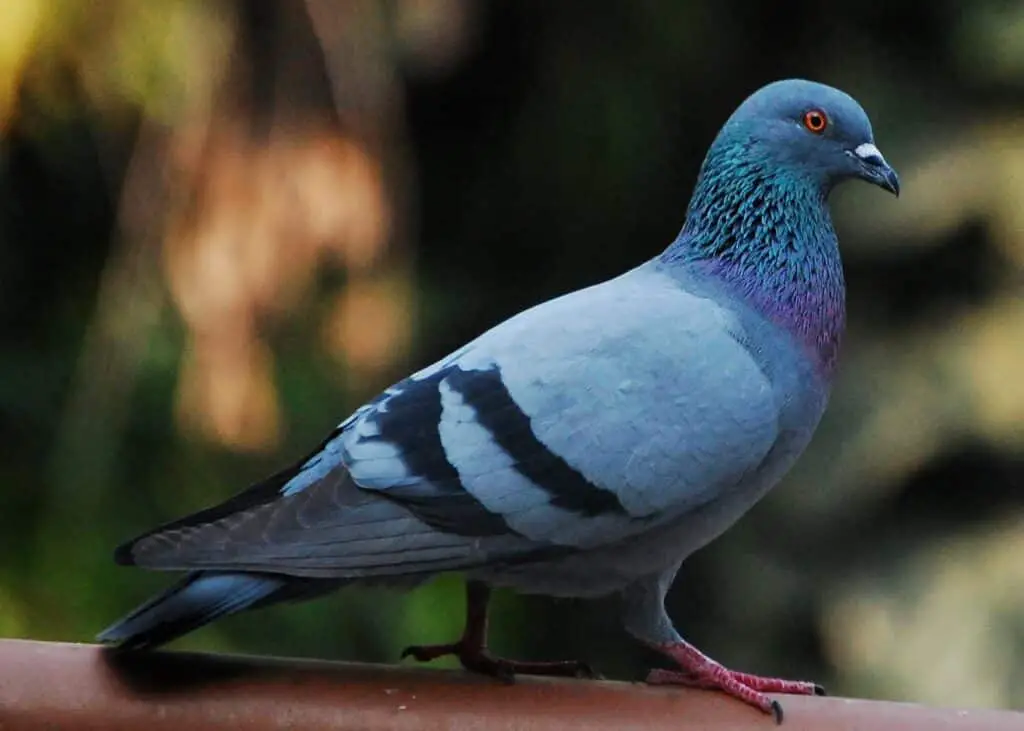
Conclusion
The coloration of pigeons is far more captivating and diverse than their commonly perceived image as uniformly gray or bluish birds suggests. Pigeons, members of the Columba genus, showcase an impressive range of colors and patterns, ranging from subtle earthy tones to vibrant, iridescent hues. This diversity in plumage is a testament to the complex interplay of genetics, diet, and environmental factors that have shaped these birds over time. The coloration of pigeons is not merely a matter of aesthetics; it serves both functional and adaptive purposes.
The colors of pigeons goes beyond mere aesthetics; it unveils the remarkable adaptations and evolutionary strategies that have enabled these birds to thrive in various habitats across the globe. Pigeons’ ability to display a spectrum of colors serves as a reminder of the intricacies of the natural world and the wonder it holds for those who take the time to observe and appreciate it. Selective breeding by humans has produced pigeons with an even broader palette of colors, including striking reds, rich yellows, and intricate patterns.
So, the next time you encounter a pigeon, take a moment to observe its plumage closely, and you might be surprised by the intricate palette of colors and patterns that adorn these seemingly ordinary birds. It’s a reminder that beauty and fascination can be found even in the most common and overlooked corners of our natural world. Pigeons, as a species, naturally encompass a range of colors, from the classic gray and bluish tones to more vibrant and unexpected shades like iridescent greens and deep purples.

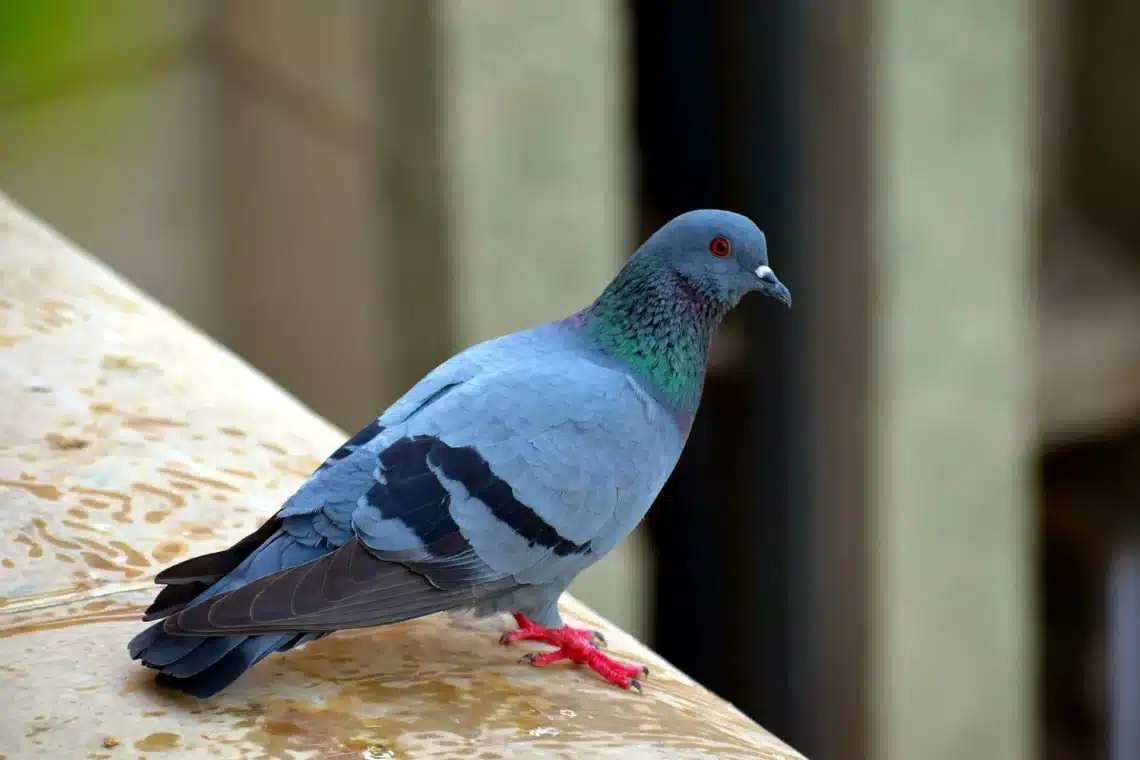
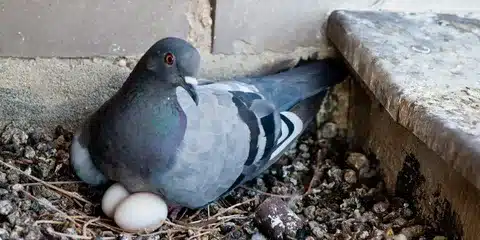
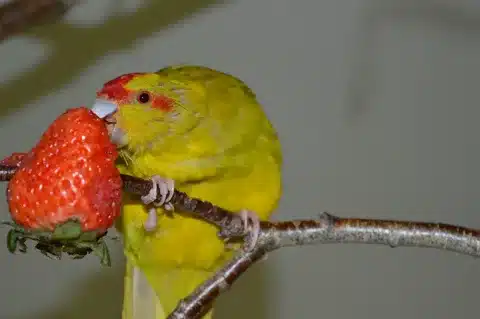
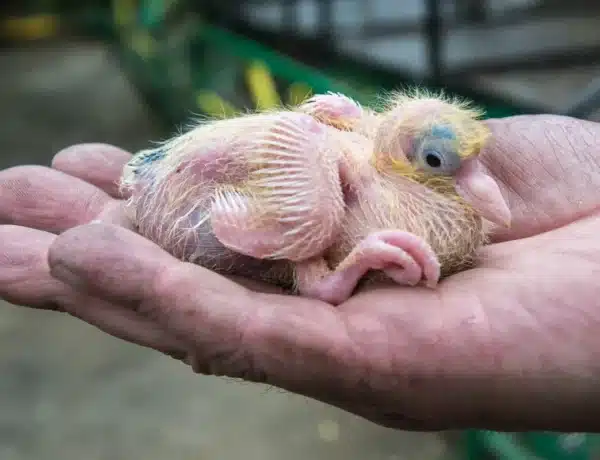
No Comments